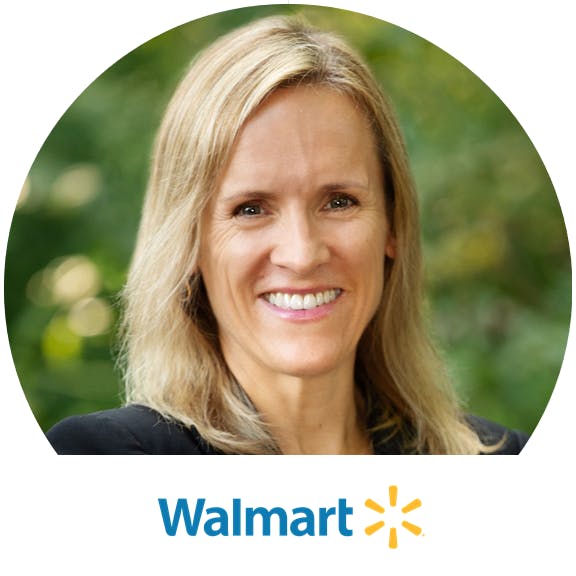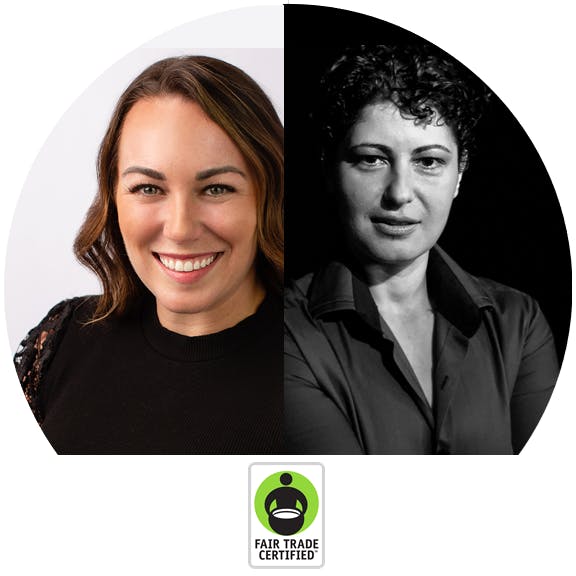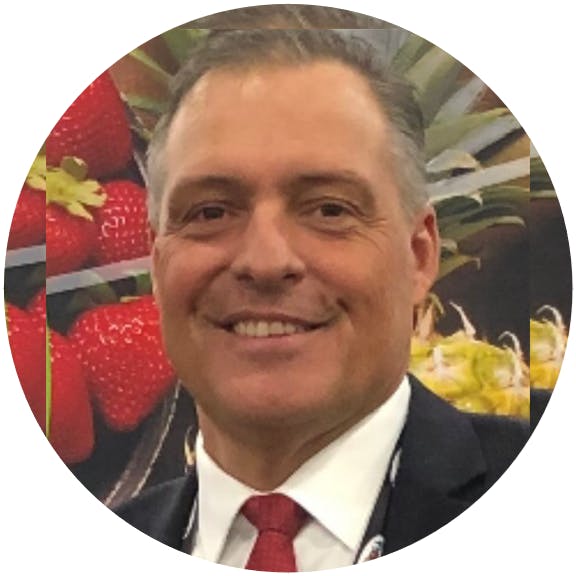The 2022 Global Market: Spring Buying Days, a four-day immersive purchasing, discovery, and educational experience facilitated by ECRM and powered by RangeMe, took place March 28-April 1. This year, not only could qualified buyers (virtually) meet face-to-face with registered brands, but they could purchase their products directly through RangeMe for the first time during a Global Market event! Plus, attendees got to join live educational sessions from cutting-edge leaders in the consumer packaged goods (CPG) and retail industry.
Our Global Market guest presenters covered everything from sustainability, digital trends, supply chain repercussions, and more during the series of fireside chats and supplier workshops. Here are a few key takeaways from these educational sessions:
Sustainable packaging and brand transparency
It is no surprise that sustainability was one of the most talked about topics at Global Market. Many of the retail experts noted that reducing wasteful packaging was a primary focus for their brand to combat the ongoing climate crisis. Suppliers should do the same if they’re hoping to get their product on these retailers’ shelves.

In our Global Market session, From Commitment to Action: Walmart’s Journey Toward Regeneration, Jane Ewing, Senior VP of Sustainability at Walmart, outlined the retailer’s commitment to regeneration and shift away from a linear ecosystem. Suppliers hoping to partner with Walmart must share their desire to offer customers a sustainable and affordable solution while consciously reducing packaging waste and lowering supply chain emissions.

Emily Page, CEO of Pearl Resourcing, provided insights on packaging design, sustainability, and safety during the Effective Ecommerce Packaging: How to Promote Your Brand While Protecting Your Products educational session. She cautioned sellers away from choosing cost over sustainability to capture new and repeat customers, as many consumers now take this into account when making a purchase.

During Fair Trade USA: A Global Model in Poverty Alleviation, Abby Ayers and Samar Habib spoke to us about their organization’s Fair Trade USA certificate and trends surrounding certified products. They shared that sustainable products were growing three times faster than the rest of the CPG market. This statistic can be explained by global consumers’ interest in companies that do their part in protecting the environment, with many consumers willing to pay more for sustainably marketed products.
Want to continue learning about sustainability best practices? Register for free educational webinars with leading retailers and experts at our upcoming Retail Sustainability Collaborative here.
Gone are the days when consumers believed their recycling and metal straw-using habits would save the earth. The younger generations are today’s biggest climate change activists, placing full responsibility on large brands and corporations. While they understand change isn’t going to happen overnight, consumers expect retailers and brands to be transparent about their efforts and are even willing to pay more for it.
Immersive shopping
Our modern-day renaissance, or digital transformation is full of new, innovative technology that retailers are already taking advantage of to improve shopper experiences and market their products. Will YouTube and TikTok try-on hauls become a thing of the past with the rise of the metaverse and live videos?

During eCommerce Trends and Predictions, Andrea K. Leigh of Allume Group, shared that the line between virtual and physical worlds is becoming blurry as virtual merchandise turns physical. For e-commerce, the metaverse is quickly becoming the new marketplace. With costs of returns skyrocketing due to reverse logistic nightmares, retailers may turn to VR as virtual dressing rooms for their online shoppers.

In the Livestreaming & Social Commerce: What Buyers and Suppliers Need to Know educational session, guest speaker Ken Fenyo of Coresight Research, Inc. shared insights on blending entertainment with e-commerce by seizing the livestream shopping opportunity. Fenyo shared that large brands like Walmart are already testing the concept on their social media platforms, matching Gen Z and Millennials’ digital lifestyles.
We saw early TikTok users quickly go viral on the platform, which is a good sign for brands looking to jump on the livestreaming or metaverse bandwagon! Plus, with authenticity being top-of-mind for consumers, marketing tactics like live videos or streams are relatively low-cost and effective.
Value-driven purchasing
While some consumer pandemic shopping trends have leveled out, others have continued to maintain their popularity. During the pandemic, consumers became used to convenience and had the time and budget-restraints to become more particular with the items they were buying. Many of our Global Market speakers discussed how consumer values have changed and how this carries over to their purchasing decisions.

If there’s anyone that understands the ins and outs of meeting consumer needs, it’s GoPuff’s Jessica Glendenning. The once small Philadelphia start-up delivering ice cream and chips to college students is now an international convenience service growing its offerings alongside their customers’ lives (think diapers and pet supplies). While speed and convenience are a big reason customers rely on GoPuff, they also recognize that their target audience has a craving for local, minority-owned, and boldly flavored products.
Leigh discussed the great life refresh brought on by COVID-19 and the effects of the rising cost of inflation we’ve seen in 2022. Consumers have become much more value-driven, whether it is their time, money, or supporting their beliefs. They want their products to be long-lasting and reliable, with ethical sourcing and sustainability top of mind.

Walmart’s Silvia Azrai Kawas, Senior VP of Health & Wellness, chatted about value-driven purchases in the wellness category, such as vitamins, collagen, and supplement products. Their customers are looking for longevity solutions and Walmart supports that goal through their partnership with Quest Diagnostics, search filters on their site, sourcing campaigns with RangeMe, and more.
As life returns to normal (knock on wood) brands that share the values of their customers will come out on top.
The ongoing rise of private labels

Many retailers have started selling products from their private labels, and with endless competition from already-established national brands, how are they becoming so successful? Because no one understands their customers better than retailers do.
Richard Gillmore discussed why his retailer, Gelson’s Markets, opted-in to a private label brand. For Gelson’s Markets, it’s about providing the best quality rather than the lowest price. The retailer is already known for offering exclusive products and wanted that to be reflected in their own line.

Peapod Digital Labs’ Jeff Bobbitt talked about how they leverage private labels for their brands such as Food Lion and Giant to increase the security of their supply and keep costs down for their customers. This has become very important to the retailers as they establish partnerships amidst supply chain-caused shortages and rising inflation rates.
Glendenning spoke about GoPuff’s recently launched private label brand Basically, and how it was designed specifically around the needs and preferences of their customers. Basically products are based on internal and external data and are meant to be unique. Why offer the same basic trail mix assortment when their customers prefer in-your-face flavors?
Private labels give retailers and customers access to affordable, trustworthy, and reliable products explicitly designed around consumers’ needs. Many retailers also use private brands as an opportunity to offer organic and sustainable products to their shoppers at an affordable price.
Community-focused means local sourcing
As we mentioned above, value-driven purchases are trending in 2022. At the same time, consumers want to support their community and are willing to pay the price for it. One of the easiest and most convenient ways to achieve this is by shopping at a familiar retailer who provides locally sourced choices.
Gillmore discussed how important it is for his retailer to source their products locally. All products they claim as local in-store come from a tight 50-mile radius. This supports Gelson’s Markets’ local community and helps them keep shelves stocked when supply chain issues occur. They also love to promote local brands with shelf tags and unique storytelling.

Prioritizing fresh and local products isn’t easy for a grocery delivery service whose couriers are often traveling by bike. Still, it’s a tactic that can set you apart from your competition in a city like New York. Jay Schneider, Head of Buying at Gorillas US, walked us through how they manage to pull it off and why sustainability, down to the packaging, is vital to Gorilla US.
In Kawas’ Global Market fireside chat, she mentioned Walmart’s commitment to invest an additional $350 billion in products made, grown, or assembled in the U.S. to create jobs and make a difference through their Open Call event with RangeMe.
Suppliers who share a passion for locally-made products interested in learning more about this incredible partnership with Walmart can head here.
Shopping local isn’t the only community-focused trend we’ve seen pop up in recent years. There has also been a considerable demand for minority-owned products, and many of our session speakers mentioned the efforts retailers put in to support this movement.
While trends like sustainability and the ongoing digital transformation may not be new to the CPG industry in 2022, it has been remarkable to hear about their evolution during COVID-19 and beyond. ECRM and RangeMe look forward to witnessing the strength of the CPG industry as we continue to connect suppliers and retailers worldwide amidst the current supply chain delays, political unrest, and rising inflation costs.
Are you a buyer on RangeMe? Browse the Global Market: Spring Buying Days Collection to view all the participating brands.

